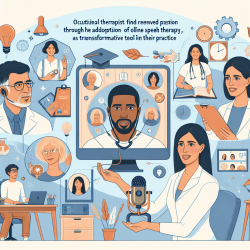Introduction
Atopic dermatitis (AD) is a chronic skin condition that affects millions worldwide, characterized by itchy, inflamed skin. In Latin America, AD's prevalence is notable, affecting up to 25% of children and 1-3% of adults. Despite its prevalence, healthcare disparities significantly hinder effective treatment and management in this region. A recent narrative review titled Healthcare Disparities in Atopic Dermatitis in Latin America: A Narrative Review highlights these disparities and offers actionable solutions.
Understanding the Disparities
Healthcare disparities in Latin America are influenced by socioeconomic, political, racial/ethnic, and geographical factors. These disparities manifest as inadequate disease knowledge, cultural and linguistic barriers, and uneven resource distribution. The absence of local clinical practice guidelines further complicates the patient journey, limiting consultation time and access to effective treatment.
Key Findings and Recommendations
The review identifies several barriers to equal care access, such as:
- Inadequate disease knowledge among healthcare professionals and patients.
- Cultural and linguistic barriers that impede effective communication.
- Stigmatization and resource maldistribution.
- Lack of local clinical practice guidelines.
To overcome these barriers, the review suggests:
- Enhancing education for healthcare professionals, patients, and the public.
- Focusing on underprivileged communities through targeted outreach.
- Utilizing telemedicine and telementoring to bridge gaps in care.
- Implementing translators and multidisciplinary teams to improve communication.
- Developing local, living clinical practice guidelines to ensure up-to-date care.
Implementing Change
Practitioners can take several steps to improve care for AD patients in Latin America:
- Participate in continuous education programs to stay informed about the latest AD treatments and guidelines.
- Advocate for the use of telemedicine to reach patients in remote areas.
- Engage in multidisciplinary teams to provide comprehensive care.
- Support the development and implementation of local clinical practice guidelines.
Encouraging Further Research
While the review provides a solid foundation for addressing healthcare disparities in AD, further research is needed. Practitioners are encouraged to contribute to local studies and collaborate with international researchers to develop innovative solutions tailored to the unique challenges faced in Latin America.
Conclusion
Addressing healthcare disparities in atopic dermatitis is crucial for improving patient outcomes in Latin America. By implementing the recommendations from the narrative review, practitioners can play a pivotal role in revolutionizing AD care in the region. For a deeper understanding of the research, practitioners are encouraged to read the original paper: Healthcare Disparities in Atopic Dermatitis in Latin America: A Narrative Review.










